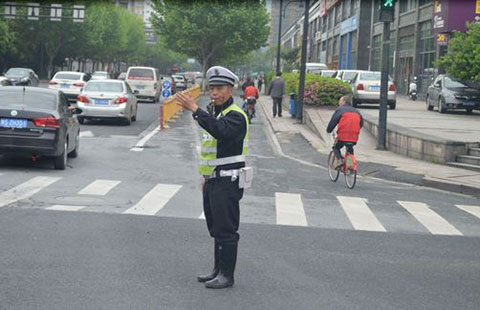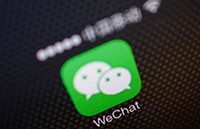China Daily Q&A session with WHO China Representative Bernhard Schwartländer
By Shan Juan (chinadaily.com.cn) Updated: 2016-04-29 16:301. How does WHO evaluate China's current immunization programs?
China's Expanded Program on Immunization (EPI) is one of the best immunization programs in the world. It has an excellent record of working with parents to protect their children from vaccine preventable diseases. For example, China's program eliminated polio in 2000 and WHO certified that China has remained polio-free since then.
Since 1992, China's immunization program worked to prevent newborns from becoming infected with hepatitis B virus. During that time, the prevalence of chronic hepatitis B infection has been reduced by 90% among children under 15 years of age, and by 97% among children under 5 years of age. The annual incidence of measles has been decreased by over 99% compared with the pre-vaccine era.
These and similar accomplishments can only be made with safe, pure, and effective vaccines. WHO evaluated China's regulation of vaccine production and safety monitoring in 2010 and 2014, finding both times that regulatory oversight met or exceeded WHO standards.
This gives us confidence that vaccines, whether they are Category 1 (vaccines provided through the EPI system, free of charge to all children) or Category 2 (only available for purchase privately), start life as safe, pure, and effective. WHO and UNICEF evaluated the EPI vaccine cold chain in 2014 and 2015, giving the EPI system high marks on cold chain management.
China's Expanded Program on Immunization provides vaccines for children at no charge, regardless of where the child lives, whether the child is locally registered, or the child's socioeconomic status.
As a result of this equitable access to vaccines, coverage with EPI vaccines is uniformly high throughout the country. Chinese parents should feel proud of the EPI system that helps them protect children from 12 vaccine preventable diseases.
2. Are there any other vaccines WHO suggests China should further include into its national immunization programs? And why?
WHO recommends that all national programs should protect children against a number of vaccine preventable diseases. There are 6 vaccines which WHO recommends be included in all national programs, which are currently only available as Category 2 vaccines (that is, available for private sale) in China:
1)The Haemophilus influenza type b bacteria causes meningitis, blood and joint infections, and pneumonia – very horrible conditions. Infection by this bacteria can be prevented by Hib vaccine, which is used in virtually all other countries in the world. Hib vaccine is safe and effective and is one of the most commonly used Category 2 vaccines in China. However, coverage varies by province, with wealthier provinces having higher coverage than less wealthy provinces. Including Hib vaccine into the national program would make the benefits of this vaccine available to all children.
2) WHO now recommends that all countries should use at least one dose of inactivated poliovirus vaccine (IPV) in their routine immunization schedule. This year, China will be introducing a dose of IPV into the routine schedule, and this introduction will result in a safer, more immunogenic polio vaccination schedule that will be consistent with the Polio Eradication Endgame Strategic Plan 2013-2018.
3)WHO recommends all countries to use the rotavirus vaccine to prevent a form of viral gastroenteritis that can lead to dehydration and the need for hospitalization. Countries that have introduced rotavirus vaccine into their routine vaccination schedule have seen large decreases in the rate of hospitalization for dehydrating gastroenteritis.
4) WHO recommends children to receive a seasonal influenza vaccine to help prevent illness, hospitalizations, and serious complications from flu.
5) WHO recommends countries to consider vaccination against chickenpox using varicella vaccine. Chickenpox is usually a mild disease that virtually all children get, but it can lead to serious complications that necessitate hospitalization. Varicella virus also causes many chickenpox outbreaks in schools, which are disruptive to the educational system.
6) WHO also recommends that all countries should use pneumococcal conjugate vaccine (PCV) to prevent pneumonia and meningitis caused by the pneumococcal bacteria. This vaccine is not currently made in China, but companies are working to develop it. WHO recommends human papillomavirus vaccine (HPV) for adolescent girls to prevent cervical cancer. Currently, there is no HPV vaccine licensed in China, but there are companies working to develop the vaccine.
3. How to evaluate the benefits and risks of vaccination for individuals and the society respectively?
Recommended vaccines should always have a benefit to the child who is vaccinated, and that benefit should be greater than the miniscule risk of the vaccine. Most vaccines also have a benefit to society in addition to the benefit to the vaccinated person. An example is measles vaccine. When high 2-dose coverage with measles vaccine is attained, circulation of the measles virus can be interrupted. This will result in the indirect protection of children who cannot be vaccinated, such as children with cancer on chemotherapy. With sustained high coverage of some vaccines, diseases can be eliminated or even eradicated as was done with smallpox and is about to be done with polio.
The key question is whether the benefits of the vaccine, in terms of disease prevented, is greater than the costs and risks from the vaccine. When careful analysis shows greater benefits to vaccination, from an individual perspective and from a societal perspective, it makes sense to recommend the vaccine for all children who can receive the vaccine.
4. How does WHO comment on China's vaccine quality and are there any links to vaccinations which need to be further improved?
China's vaccine regulatory authorities have worked with WHO for more than 16 years to strengthen regulatory oversight of the production and safety monitoring of vaccines. WHO arranged for independent evaluation of China vaccine regulations in 2010 and 2014, and on both occasions, vaccine regulation met or exceeded WHO/international standards. Passing WHO assessment means that the current Good Manufacturing Practices are in effect for all vaccines used in China, whether they are manufactured in China or imported, and whether they are Category 1 or Category 2 vaccines. High quality regulatory oversight for vaccine production provides assurance that the vaccines in China start out as safe, pure, and effective.
Once vaccines are made and released for use by the China FDA, they need to be handled properly to maintain potency and effectiveness. WHO and UNICEF have evaluated the distribution cold chain for the EPI system and found it to be of consistently high quality. The Shandong vaccine event has shown that oversight of the distribution of Category 2 vaccines needs to improve, and the reforms that have been proposed will help to achieve this once implemented. The EPI system distribution system will be strengthened by adding digital tracing and temperature monitoring capabilities to the vials of vaccine. In addition, the reforms that have been proposed will make it more feasible to include new vaccines into Category 1, making them freely available to all children. The proposed reforms are comprehensive and present a clear pathway and vision to a system that protects all of the vaccines, so that the vaccines can protect all of the children.
There are also new vaccines that would make it easier for parents to protect their children from vaccine preventable diseases. For example, having combination vaccines that can prevent more diseases with fewer injections would make parents and the babies happier. There are many possible combination vaccines that could be developed for Chinese children, such as DTaP/IPV or DTaP/IPV/Hib. Combination vaccines can make it easier to protect against additional diseases while maintaining high vaccination coverage levels.
5. Are there any examples of major public health setbacks caused by public refusal to vaccinate worldwide?
Yes. The history of immunization has several examples in which confidence in vaccines declined, coverage decreased, and the disease came back. In the 1980s, confidence in the whole cell pertussis (whooping cough) vaccine declined, and some countries stopped recommending pertussis vaccination. The result was resurgence of whooping cough in these countries. There are other examples of fraudulent studies linking vaccines to particular health conditions, which have led to a decline in parental confidence and the resurgence of disease.
In 2012, WHO's Strategic Advisory Group of Experts on Immunization convened a working group to study parental hesitancy to vaccinate. WHO recognized that in order to maintain the high coverage rates needed to control, eliminate, or eradicate vaccine preventable diseases, parents must be confident in the vaccines that are used to protect their children. Confidence should come from knowledge that the right set of vaccines is recommended for children, and that the vaccines are safe, pure, and effective.
- Xi: Talks key to resolving differences
- New law adopted on overseas NGOs
- Migrant population growth rate slows
- Investors eye Italian soccer giants
- Baidu signs agreement to reduce online IP infringement
- Global Snapshot
- Internet regulators shut down 1,046 illegal websites in Q1
- Even China's tech billionaires not safe from phone scams
- Home is where the heart is: Beijing car-hailing app drivers' journey
- China ranks No 1 in progress against child discrimination








